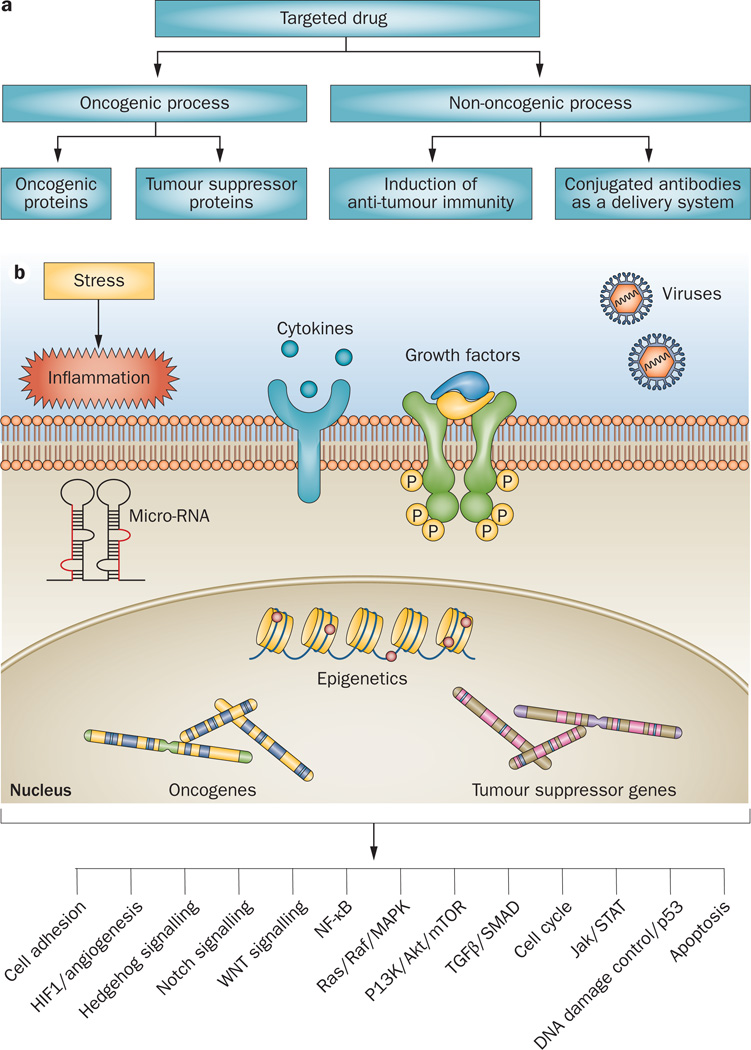Figure 1.
Targeted therapy of lymphoma. a | Although targeting the underlying driver oncogenic process is logical, recent progress in lymphoma therapy has resulted from targeting non-oncogenic proteins, such as CD20 and CD30. b | Hundreds of genetic alterations in tumour cells have been identified in tumour-suppressor genes or oncogenes. Rather than designing unique drugs for each genetic alteration, several genetic defects can be grouped within well-defined oncogenic pathways. Such an approach may simplify drug development as only a dozen or so oncogenic pathways have been described. Within each pathway, multiple proteins can be targeted, regardless of their mutation status.

